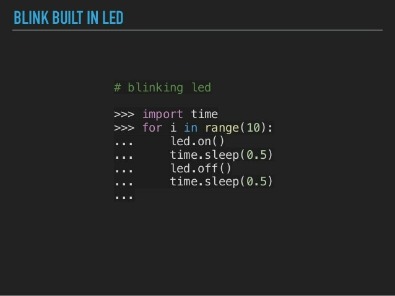
Jennifer Agee has been editing financial education since 2001, including publications focused on technical analysis, stock and options trading, investing, and personal finance. The horizontal line coinciding at 435 on the chart marks the support level for Cipla. The horizontal line coinciding at Rs.215 on the chart, marks the resistance level for Ambuja Cements.
What is the best support and resistance indicator?
Fibonacci levels are one very popular set of indicators used widely in determining support and resistance. Many traders also make heavy use of moving averages when determining support and resistance level, and pivot points are also quite popular.
Technical indicators, such as Moving Averages and Bollinger Bands, create dynamic support and resistance levels as the price and time change. It is important to note that support and resistance levels are not exact price points, but rather zones where demand and supply can change. Support and resistance levels are closely monitored by market participants, who are all keen to take advantage of opportunities that may arise when supply or demand changes.
Get daily trading ideas, educational videos and platform updates.
When you see an upward trendline, this means the price of the forex pair is increasing in value. This means that the highs and lows of the individual candlesticks are relatively higher along the forex price movement’s trendline. When trading, you could take advantage of this by opening a long position as the market price levels keep reaching higher heights. Trendlines can be identified by monitoring the opening and closing price of the underlying asset as well as the trading range of individual candlesticks.
Thus, Support and Resistance are areas on your chart, not lines. Treat Support and Resistance as areas on your chart, not lines. This occurs when the market comes close to your SR line, but not close enough.
2 – The Support
Another common characteristic of support/resistance is that an asset’s price may have a difficult time moving beyond a round number, such as $50 or $100 per share. Many people think in terms of a round number, and this carries over into the stock market. Because people have an easier time visualizing in round numbers, many inexperienced traders tend to buy or sell assets when the price is at a round number.
Day trading guide for today: Six buy or sell stocks for Wednesday — June 7 Mint – Mint
Day trading guide for today: Six buy or sell stocks for Wednesday — June 7 Mint.
Posted: Wed, 07 Jun 2023 07:00:00 GMT [source]
When a trendline is broken, a support trendline becomes a resistance trendline and vice-versa. Investors can hold onto long positions for years or even decades without running into problems. But most short positions are much shorter in duration – a few months to a few years at most. There are several practical limitations that limit how much time traders can…
How to start trading?
The difference with this tool is that a single Fibonacci retracement or extension provides many potential support and resistance levels. Traders should be aware of these levels and plan accordingly. For example, if a stock had support at $10 and that support level held, a trader may enter a long position. If that support level broke, a trader may enter a short position.

Dynamic support and resistance levels are calculated using a continual supply of updated data throughout the day. For example, a stock may find support at the 50-day moving average (the average https://traderoom.info/ganns-methods/ of the past 50 closing prices). As more trading data presents itself, the price of the 50-day moving average will change and so will the corresponding support (or resistance) level.
Trading supports in an uptrend
While analyzing any coin, traders must look for support and resistance levels as they can act as good entry and exit opportunities. Bitcoin was stuck between the $10,500 to $11,000 zone from August 2019 to July 2020. After the breakout from the resistance zone, the price again dropped below $10,500, but the bulls bought the dip aggressively, flipping the level into support. This offered a good buying opportunity to traders as the new uptrend was just getting started. It’s important to keep in mind that support and resistance in forex are the building blocks in technical analysis.

You’ve no idea which group of traders will be in control. Traders with the fear of missing out would enter their trades the moment the price comes close to Support. Higher lows into Resistance usually result in a breakout (ascending triangle). Lower highs into Support usually result in a breakdown (descending triangle). If you follow the “theories” above, it would cost you money in the long run. Because these are the biggest lies about Support and Resistance trading strategy.
GBP/USD heads for highest weekly close since April 2022
Support can be a price level on the chart or a price zone. In any event, support is an area on a price chart that shows buyers’ willingness to buy. It is at this level that demand will usually overwhelm supply, causing the price decline to halt and reverse. Simply put, an area of support is where the price of an asset tends to stop falling, and an area of resistance is where the price tends to stop rising. But traders really need more information about support and resistance beyond those simple definitions before they attempt to make trading decisions based on those areas in a chart. The more times the price level has stopped previous advances or supported previous declines, the strong will be the resistance or support in the future.
- The same thing is with a buy trade, the difference being that after you opened a buying position you need to mind resistance levels.
- Support breaks and new lows signal that sellers have reduced their expectations and are willing sell at even lower prices.
- When the price moves in your favour, you’ll make a profit; and make a loss if it moves against you.
- Identifying price points as either a support or resistance is extremely simple.
- Most charting platforms enable you to plot or draw static support and resistance lines, which are based on historical price levels.
Is it better to buy or sell a call?
Which to choose? – Buying a call gives an immediate loss with a potential for future gain, with risk being is limited to the option's premium. On the other hand, selling a put gives an immediate profit / inflow with potential for future loss with no cap on the risk.


